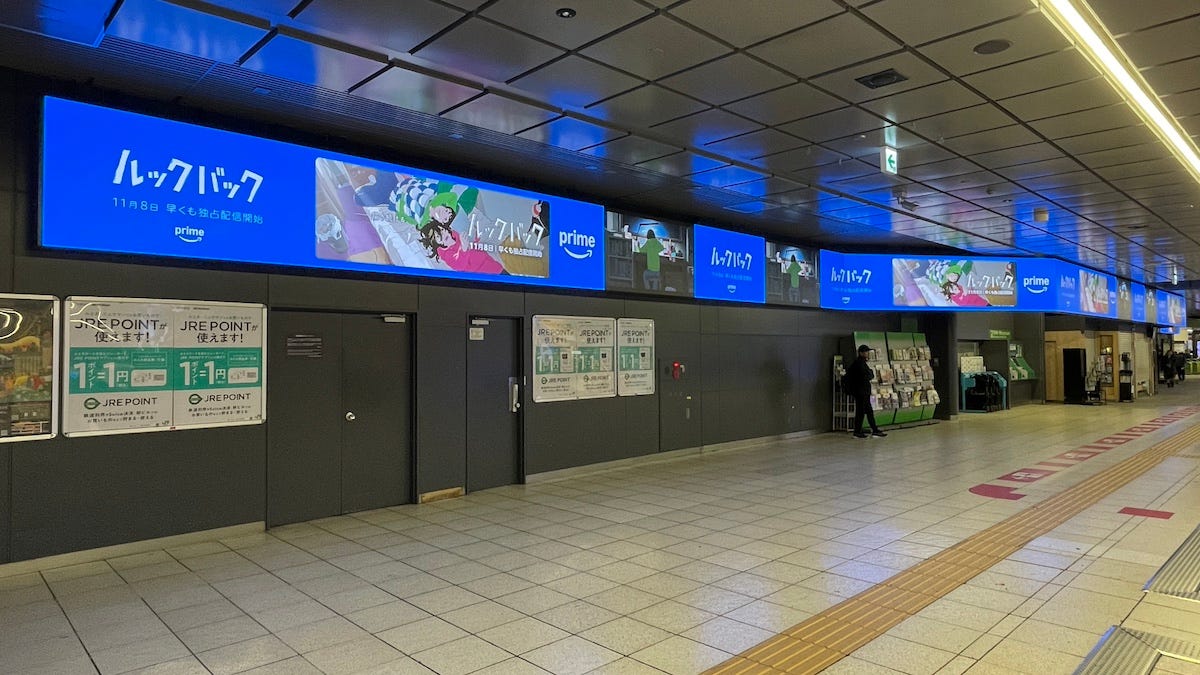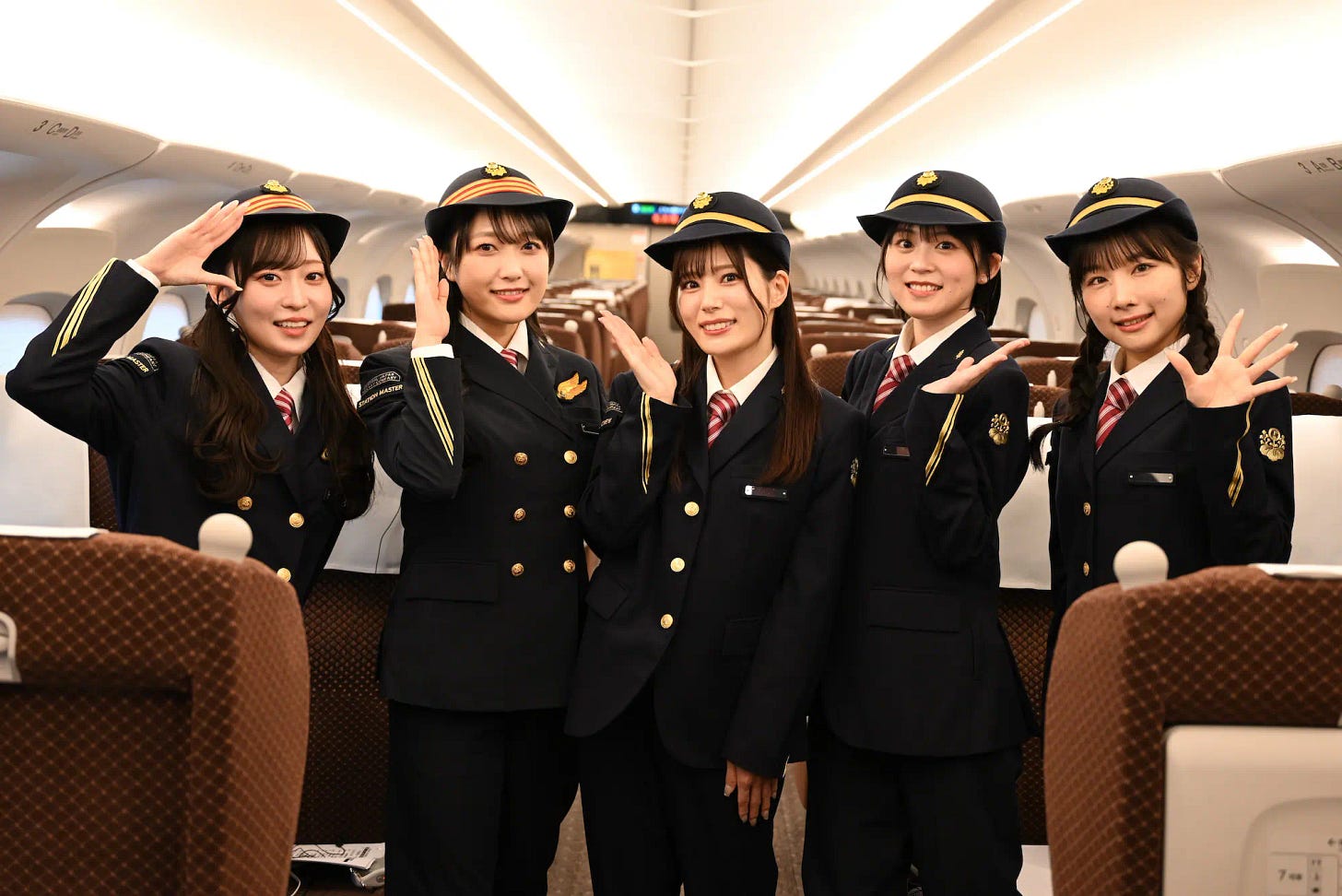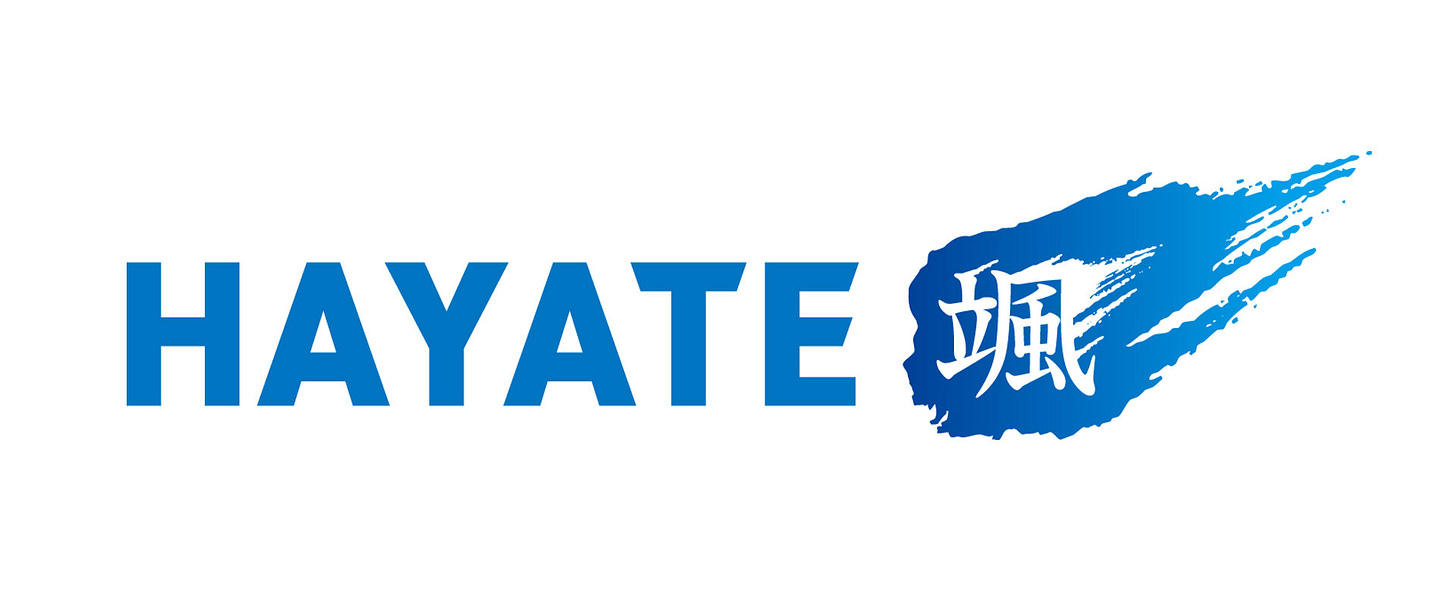Prime Video seeks global anime, manga IPs
Plus: Anime collaborations boost Shinkansen ridership; Aniplex and Crunchyroll form joint venture; Growing U.S. demand for middle grade manga titles; and more
This is your weekly Animenomics briefing, covering the business of anime and manga. Today is Wednesday, March 19, 2025.
In case you missed it: I wrote a column explaining recent developments in Japan’s domestic manga market, plus its implications on comics retailers in the United States, as part of ICv2’s Manga Week coverage.
Prime Video chases popular anime IPs for global growth

Amazon Prime Video is increasing investment in anime to anchor its global expansion strategy, two executives affiliated with the subscription video on demand service told U.S. entertainment trade news website Variety.
Why it matters: Prime Video is the world’s second largest streaming video service by number of paying subscribers, but revenue attributable to anime lags streaming peers Netflix and Hulu, according to an Animenomics analysis of Parrot Analytics data.
What they’re saying: “We have a big commitment to an anime slate that we’re pulling together, and the teams are all working on it,” Jennifer Salke, head of Amazon MGM Studios, a sister company of the streaming service, told Variety.
When asked about the factors that make a title an international hit, Kelly Day, Prime Video’s vice president for international, said, “One is big IP. It could be popular manga or popular anime being developed and distributed around the world. The second thing is how much they generate social buzz.”
Where things stand: Prime Video released globally in November one of last year’s biggest anime films, Look Back, Amazon MGM Studios’ first investment in an anime production committee.
Look Back’s animation team has been recognized for their creative contributions with a Japan Academy Film Prize, and the film was also named best animation film at the 48th Japan Academy Film Prize ceremony last weekend.
Live-action adaptations of popular manga like The Silent Service, published by Kodansha, and Oshi no Ko, from Shueisha, are also available exclusively on Prime Video.
Rewind: In September, Prime Video Japan content business division general manager Yosuke Ishibashi told attendees of the APOS media conference in Bali that anime has been a key factor in the streaming service’s success domestically.
Prime Video also launched at the end of 2023 a dedicated anime channel in India that’s operated by Avex subsidiary Anime Times.
What’s next: Starting next month, Prime Video will stream the upcoming Mobile Suit Gundam GQuuuuuuX anime series, fresh off of a preview box office run that brought in more than US$1 million in the United States.
Anime collaboration tours boost Shinkansen ridership

Central Japan Railway is capitalizing on the growing spending-driven fandom culture known as ‘oshikatsu’ to boost ridership on the Tokaido Shinkansen high-speed rail line between Tokyo and Osaka to pre-pandemic levels.
Why it matters: JR Central’s more than 100 collaborations with anime projects and musical artists this fiscal year is transforming the railway operator’s public image from that of a traditional company into an innovative one.
What’s happening: JR Central on Wednesday included its Oshi Travel collaborations into the company’s 30-year vision of transformation from a railway company into an organization that helps develop the popular culture market.
This past year, JR Central has collaborated with anime titles like Jujutsu Kaisen, Sound! Euphonium, and Too Many Losing Heroines! to promote trips outside Tokyo.
In November, a 2.5-hour charter train from Osaka to Tokyo saw all 16 cars turned into a live event venue featuring five anime voice actors in Tokaido Shinkansen crew uniforms and the voices of ten more actors in overhead announcements.
By the numbers: JR Central relies on the Shinkansen for 70 percent of its profits, and Oshi Travel helps the company attract new riders.
Some tours under the Oshi Travel program have attracted more than 10,000 riders, the Nikkei financial newspaper reports.
The bigger picture: Yano Research Institute, a market research firm, estimates that Japan’s oshikatsu market will grow to reach ¥1 trillion (US$6.7 billion) in the 2024–2025 fiscal year.
Clippings: Aniplex, Crunchyroll establish joint venture
Aniplex and Crunchyroll have established an anime planning and production joint venture named Hayate. The unit will fund anime productions for Crunchyroll, is led by Aniplex executives, and will be staffed by both companies. (Press release)
Wall Street research firm Bernstein projects that Crunchyroll will account for 40 percent of Sony Pictures’ operating profit within two fiscal years, according to a Variety Intelligence Platform report.
France’s pandemic-era stipend that gave youths as much as €300 to buy manga, in addition to cultural activities like attend concerts and visit museums, has been cut in half for 17- and 18-year-olds and eliminated for 15- and 16-year-olds. (The Local)
Rewind: As previously reported by Animenomics, as much as 70 percent of all bookstore purchases made with money from the stipend went toward manga.
Publishing giant Shogakukan has launched the Nintendo Switch video game console’s first digital manga app with titles from CoroCoro Comic, a manga magazine targeting children in elementary school. (Famitsu)
Film production studio Nikkatsu, which has invested in anime productions like From Bureaucrat to Villainess in recent years, has spun off its anime-related business into a new subsidiary, NK Animation. (Film Goes with Net)
Saudi Arabia’s Manga Productions and Saudi Anime Expo organizer Sela announced a strategic partnership to attract Japanese companies to participate in Riyadh Season, an annual monthslong entertainment event in the Saudi capital. (Press release)
Digital manga service DouDoujin is holding a contest for Indonesian artists and aspiring voice actors to create fan art and voiceovers of three Japanese works, with a possibility for winners with work with publishers in the United States. (DouDoujin)
U.S. sees growing need for middle grade manga titles
“There’s a real hunger for [global stories], and we’ve only tapped into a fraction of the stories that are available. The middle grade graphic novel market continues to do so well because readers are continually looking for themselves in stories. There’s a universality to growing up, and each generation of young readers deals with the same issues but in different ways and with different experiences. It’s why middle grade is such a prevailing industry.”
— Whitney Leopard, RH Graphic and Ink Pop executive editor
Context: Speaking with Publishers Weekly, Leopard sees growing need in the United States for manga, Korean manhwa, and webtoon titles that are friendly to young and teenage readers at publishing giant Penguin Random House.
RH Graphic, Penguin Random House’s imprint for children’s graphic novels, will launch its Ink Pop line of children’s manga, manhwa, and webtoons later this year.
Rewind: Manga debuted in the U.S. middle grade books category in 2023 when Scholastic partnered with Tezuka Productions to reimagine Osamu Tezuka’s 1970s Unico manga.
Yes, but: Japan and South Korea are increasingly placing less emphasis on children’s comics as fewer and fewer children are born in both countries.
Circulations of CoroCoro Comic, Japan’s leading manga magazine for elementary school boys, and Ciao, for elementary school girls, have declined 75 percent and 83 percent, respectively in the last decade.
Animenomics is an independently-run and reader-supported publication. If you enjoyed this newsletter, consider sharing it with others.




Another cracking episode of Animenomics. Thanks Richardson.
We can look at this week’s Hayate announcement as a counter/offensive by Sony against its major existential competitors: Amazon, Netflix and Disney.
Crunchyroll have lost some massive new anime and ver the past 12 months incl. Sakamoto Days and Gundam GQuuuuuuX. Hayate will hopefully guarantee them Triple-A manga and webtoon adaptations where Sony owned companies are the only committee members alongside the IP owner/publisher. More pie and more incentive potentially for the best studios. You can’t turn a triple-A Shonen Jump manga into a Triple-A anime without a Triple-A level creative production studio like UFotable, A1 Pictures or Science Saru.